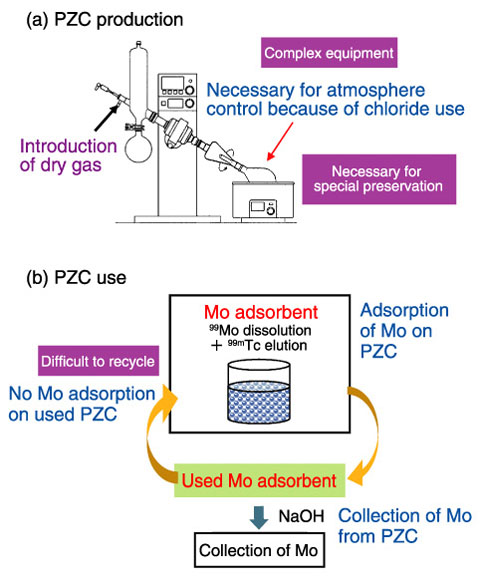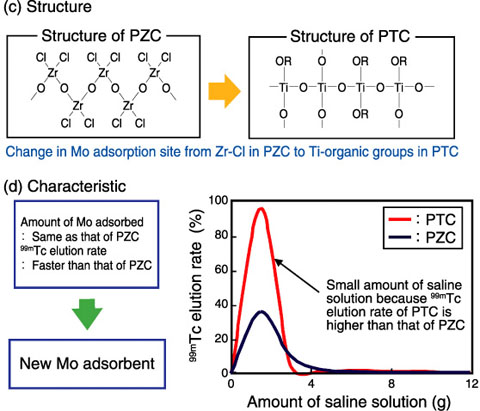
Fig.12-21 Properties of the conventional Mo adsorbent (PZC)

Fig.12-22 The newly developed Mo adsorbent
99mTc is used as a radiopharmaceutical for diagnosis. 99mTc is used in more than 50% of the nuclear medicine diagnosis cases in Japan. 99mTc is obtained from the β-decay of 99Mo. The demand for 99Mo in Japan is the second highest in the world; however, the supply of 99Mo depends entirely on the import from foreign countries. A steady supply of 99Mo from domestic production is required because of the unplanned shutdown of aged research reactors that produced 99Mo, in foreign countries, and the difficulty in the airlift to Japan owing to volcanic eruption. 99Mo is obtained by separating the fission products of 235U, from the neutron capture reaction 98Mo(n,γ)99Mo, etc. The 98Mo(n,γ)99Mo reaction has been selected for 99Mo production in the Japan Materials Testing Reactor (JMTR). Poly-zirconium compound (PZC) has been studied for use as a Mo adsorbent in a 99Mo-99mTc generator. However, PZC requires complex equipment for synthesis and special preservation methods and is difficult to recycle (Fig.12-21). Hence, the technical development of a new Mo adsorbent was started to overcome these drawbacks. In this process, first the structure of the Mo adsorbent was analyzed. Next, the Mo adsorption sites were changed from chlorine groups to organic groups (Fig.12-22(c)). Titanium alkoxide was used as the raw material instead of zirconium tetrachloride (ZrCl4). Consequently, the equipment was simplified because chlorine removal was no longer required. From these studies, a production method for a new Mo adsorbent, polytitanium compound (PTC), was developed.
A performance test was carried out on PTC at Japan Research Reactor No.3 Modified (JRR-3M). It was found that the amount of Mo adsorbed by PTC is the same as that adsorbed by PZC and that the 99mTc elution rate of PTC is higher than that of PZC (Fig.12-22(d)). Furthermore, it was found that Mo can be collected from the used PTC and that the Mo-desorbed PTC can be reused. Thus, this development contributes to the reduction of radioactive waste.